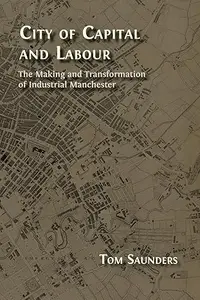City of Capital and Labour: The Making and Transformation of Industrial Manchester
by Tom Saunders
English | 2025 | ISBN: 180511557X | 336 Pages | True PDF | 57 MB
by Tom Saunders
English | 2025 | ISBN: 180511557X | 336 Pages | True PDF | 57 MB
This compelling book explores the evolution of industrial Manchester, offering a fresh perspective on its built environment through the lens of architecture, archaeology, and social history. Richly illustrated and designed for both academic and general audiences, it sheds new light on Manchester's transformation during the Industrial Revolution, highlighting how the city's physical form shaped and was shaped by its socio-economic and cultural dynamics.
By analysing architectural styles, building types, land use, and spatial relationships, the study identifies distinct phases of development from the early eighteenth to early twentieth century. It delves into how Manchester's material landscape mediated industrialisation and social tensions, reflecting the emergence of both bourgeois and proletarian communities. The book argues that the city's evolving physical structure was deeply intertwined with the capitalist logic of class relations, where architecture and urban spaces became arenas for competing social identities.
Through mapping the enduring physical traces of these changes, and using a Marxist lens to examine shifting power structures in cities, the book underscores Manchester's role as a microcosm of industrial and urban transformation. It invites readers to rediscover the city's industrial heritage, emphasising the importance of its historic buildings in understanding the socio-economic forces that shaped modern urban life-before they are irrevocably altered by contemporary redevelopment.



